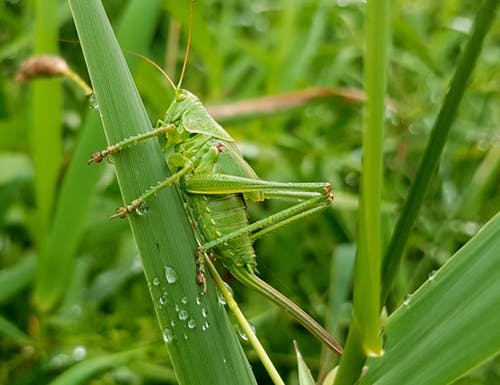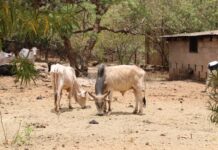|
Getting your Trinity Audio player ready...
|
By Roseleen Nzioka
Nairobi, Kenya: Kenya, Ethiopia, and Somalia have deployed a combination of ground and aerial operations to deal with the ongoing invasion of the desert locusts currently affecting the region.
An estimated US$ 70 million is needed to destroy the pests whose invasion is described as “unprecedented”, experts have said.
Desert Locust Control Organisation Director Dr. Stephen Njoka said that the region has not faced a locust threat of this magnitude in many years; 25 years for the region and 70 years for Kenya.
Dr. Njoka said the Kenya government together with development partners had already deployed a number of planes for aerial spraying in the worst affected parts of the country. He said other aircraft had also been deployed for surveillance.
The ongoing invasion into East Africa by the desert locust is unprecedented and threatens food security in the region, the Food and Agriculture Organization has said.
The FAO says the desert locust is considered the most dangerous locust species in the world. South Sudan and Uganda though currently not affected, are at high risk, said FAO.
The remarks were made during a media briefing in Nairobi on the desert locust invasion in the East African region. Speaking to journalists on specific questions about the preparedness of the country in dealing with the menace, Dr. Njoka allayed fears about the possible harmful effects of the insecticides used in the aerial and ground spraying exercise saying proper use of the chemicals was strictly observed.

He said that out of the US$70 million needed for the successful combat of the desert locust invasion, the UN had already released US$ 10 million while the regional governments were also contributing their share of the cost.
In a press release issued earlier in the week, FAO Director-General QU Dongyu said that the situation was of international dimensions requiring the intervention of the international donor community.
“Authorities in the region have already jump-started control activities, but in view of the scale and urgency of the threat, additional financial backing from the international donor community is needed so that they can access the tools and resources required to get the job done,” said Mr. Dongyu. This will require sourcing of additional equipment (planes, ground vehicles, sprayers, pesticide) and personnel in order to upscale the campaign.
At the Nairobi briefing, Guleid Artan, Director of IGAD’s Climate Predictions and Applications Center said: “The Desert Locust outbreak was clearly worsened by the unusually heavy rains experienced in the region. This has been a year of extremes and climate anomalies for East Africa, a region that hosts some of the most vulnerable populations of the world. 2019 brought us unusual cyclonic activity – 8 cyclones, the highest number in a single year since 1976, forming over the northern Indian Ocean -, droughts, floods, and a desert locust outbreak. Our Climate is changing and it is already leading to hundreds of casualties and affecting the livelihoods of millions of people in our region.”
FAO says that the unusual weather and climate conditions have contributed to the spread of the locusts, including heavy and widespread rains since October 2019. A further increase in locust swarms is likely to continue until June due to the continuation of favourable ecological conditions for Desert Locust breeding.
According to the Food Security and Nutrition Working Group (FSNWG) most recent update, the East Africa region is already experiencing a high degree of food insecurity, with over 19 million people coping with Crisis (IPC Phase 3) or higher levels of hunger.
Highlights of the desert locust outbreak:
● Kenya: Immature and maturing swarms continue to arrive in the northeast from Ethiopia and Somalia and are moving throughout northern areas in Mandera, Wajir and Marsabit counties and have reached central areas of Isiolo, Meru North and, northern Laikipia. Some swarms in the north have moved back into southern Ethiopia while others are now mature and laying eggs that will hatch after about two weeks, giving rise to hopper bands in February and March. Today, a swarm reached the southern Rift Valley near Kapedo on the border of Baringo and Turkana counties. Immature swarms were also spotted in Mwingi, Kitui County. Aerial and ground control operations are in progress in some areas. Further movements are expected, especially in Turkana and Marsabit counties.
● Ethiopia: Ground and aerial control operations continue against immature swarms in Somali and South Oromiya regions. At least one swarm has reached the edge of the Rift Valley in Southern Nations Nationalities and Peoples Region (SNNPR). Some 6 000 ha were treated by air so far this month.
● Somalia: Control operations are in progress in the northeast (Puntland) while maturing swarms continued to move southwards in central and southern areas. Survey and control operations are limited by insecurity.
● South Sudan: There remains a high risk of a few swarms appearing at any time in the southeast (Kapoeta East and Ilemi Triangle) coming from adjacent areas of NW Kenya, flying north through the Rift Valley or northwest from Marsabit county. They may transit through the area to the Rift Valley in southwest Ethiopia.
● Uganda: There remains a moderate risk of a few swarms appearing at any time in the northeast from adjacent areas of NW Kenya until about the end of January.













